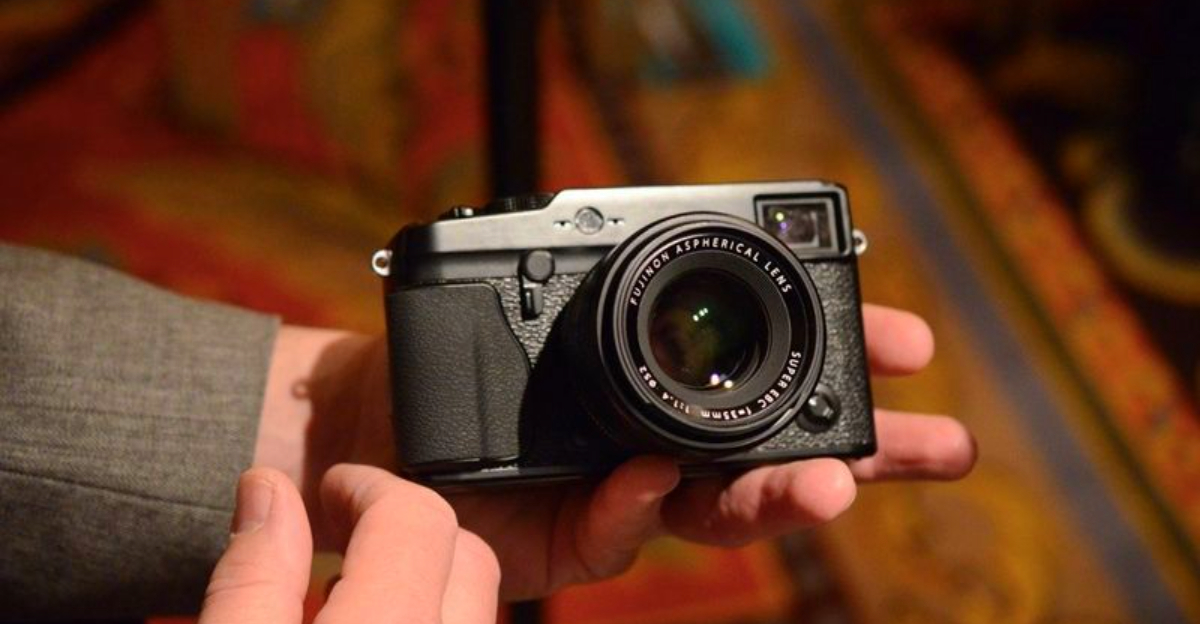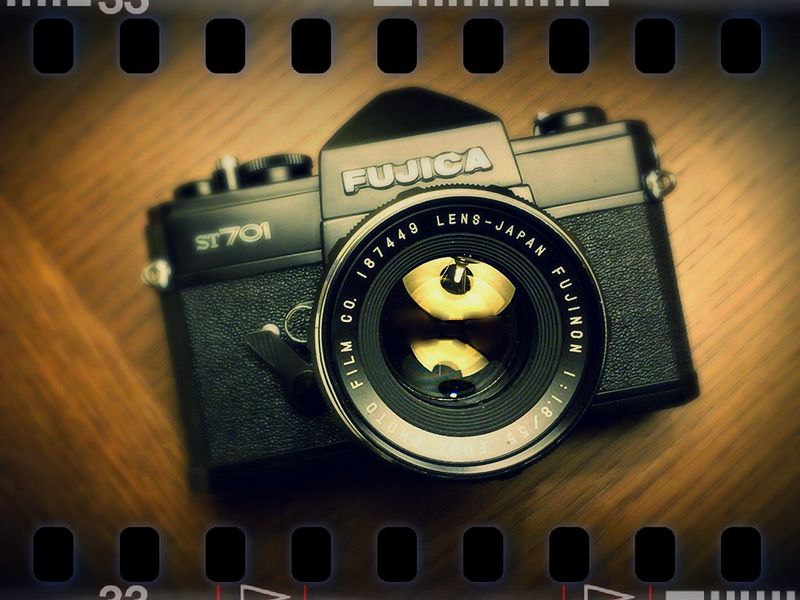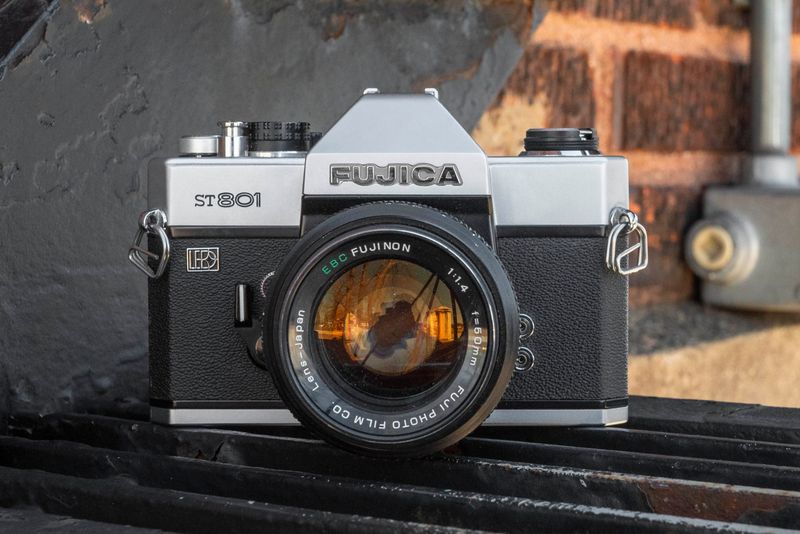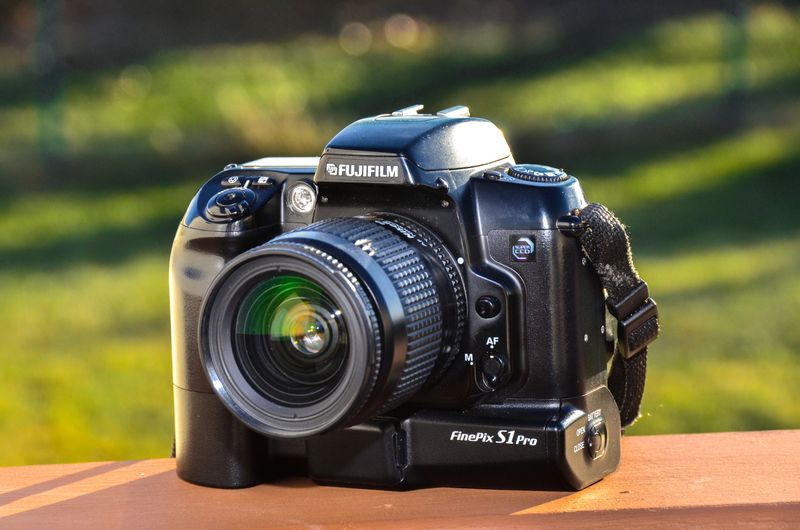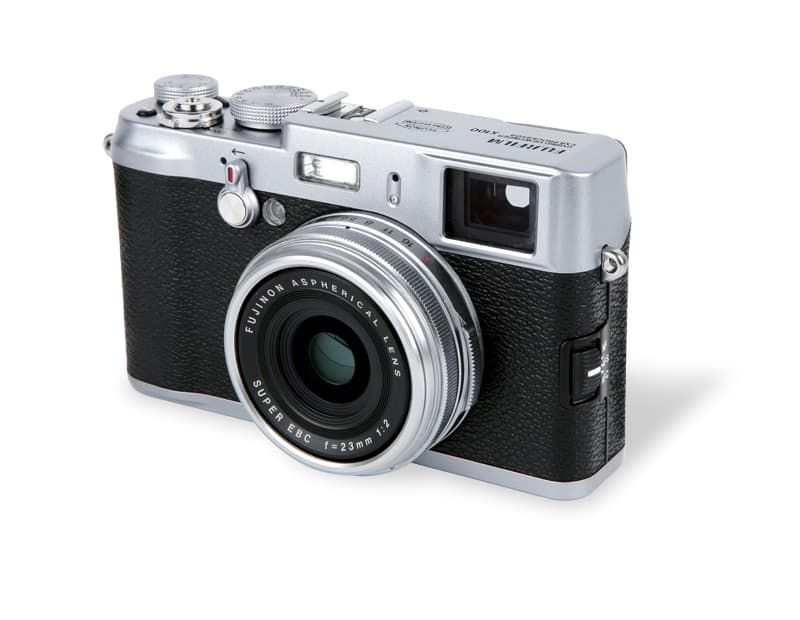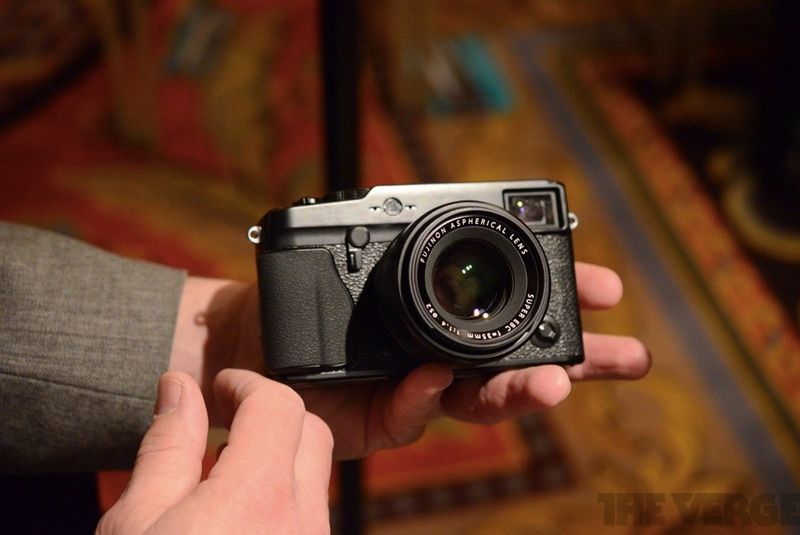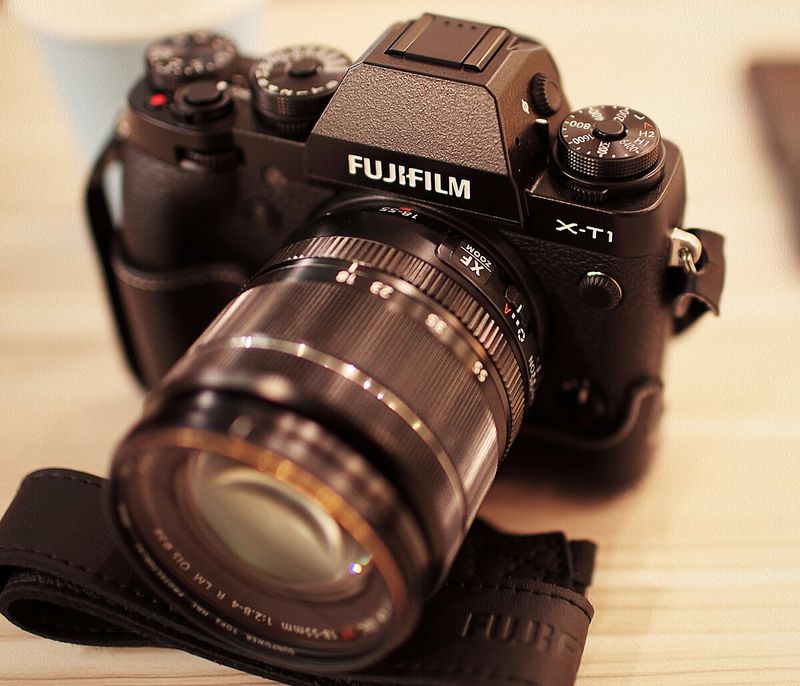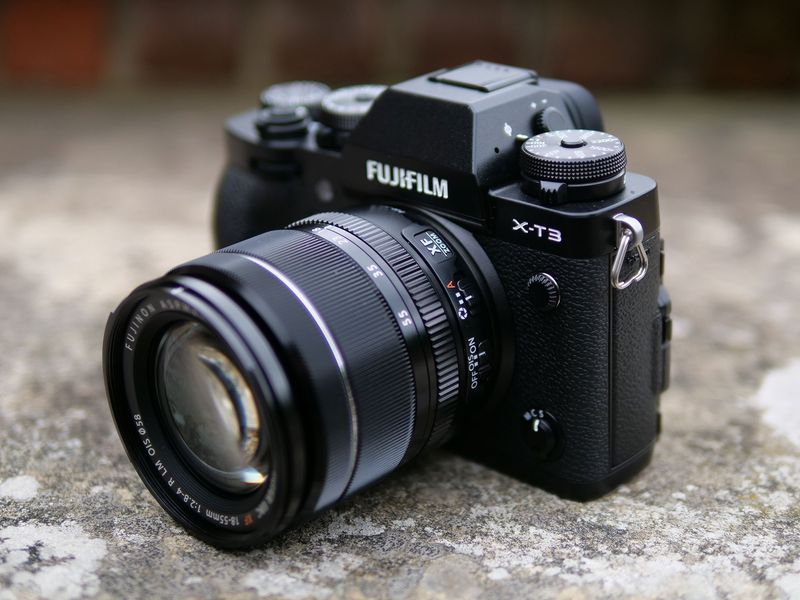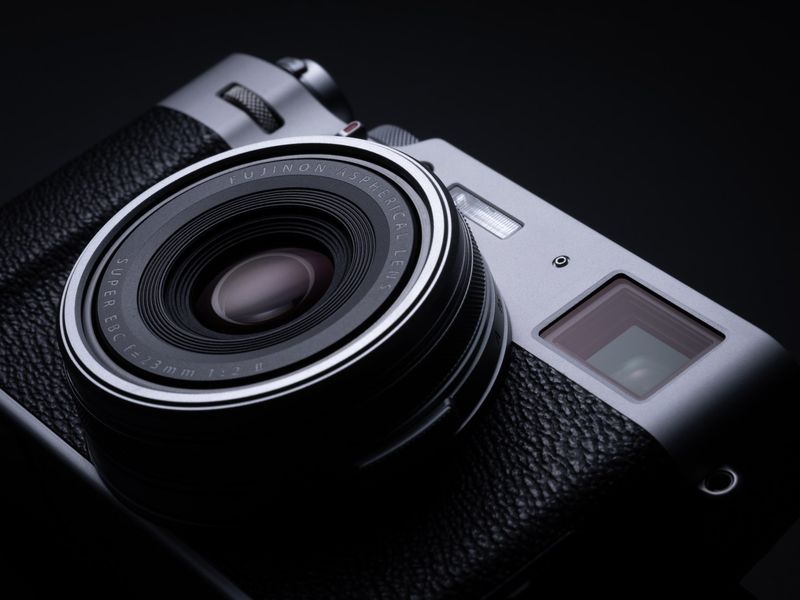Fujifilm has been capturing hearts and moments for decades, building a reputation that blends classic design with cutting-edge technology. From the early days of film photography to today’s digital mirrorless marvels, this brand has consistently delivered cameras that photographers genuinely love. Whether you’re a street photographer hunting for the perfect compact or a content creator needing versatile video features, Fujifilm has something special waiting for you. Here are the cameras that have earned their place in photography history and in the hands of passionate fans worldwide.
1. Fujica ST701 (1970s)
Back in the 1970s, Fujifilm made a bold statement with the Fujica ST701, a rugged 35mm SLR that photographers could truly depend on. Built like a tank, this camera survived countless adventures while delivering consistently sharp images thanks to its legendary Fujinon lenses. Film enthusiasts today still hunt for this model at vintage camera shops and online marketplaces.
What made the ST701 stand out was its no-nonsense approach to photography. No fancy electronics or confusing menus – just pure mechanical precision that let you focus on composition and light. The weight in your hands felt reassuring, promising durability that many modern cameras can’t match.
For anyone exploring film photography or collecting vintage gear, the ST701 remains a beloved choice that connects you to photography’s golden era.
2. Fujica ST801 / ST901 (1970s–80s)
Fujifilm didn’t stop innovating after the ST701’s success. The ST801 and ST901 arrived with upgraded features that hobbyists absolutely adored, especially the built-in metering system that made exposure calculations much easier. These cameras brought convenience without sacrificing the reliability photographers had come to expect from the Fujica line.
Compatibility with a wide range of lenses made these models incredibly versatile. Whether shooting landscapes, portraits, or street scenes, you could swap glass to match your creative vision. The metering system helped beginners learn proper exposure while giving experienced shooters quick reference points.
Even decades later, these cameras function beautifully when properly maintained, proving that quality craftsmanship never goes out of style in the photography world.
3. Fujifilm FinePix 4700 Zoom (1999)
When the FinePix 4700 Zoom landed in 1999, it represented Fujifilm’s serious commitment to the emerging digital photography revolution. This wasn’t just another point-and-shoot; it was a bridge between film’s rich history and digital’s exciting future. Early adopters appreciated the zoom capability and the freedom from film costs and darkroom chemicals.
Sure, by today’s standards, the image quality seems modest, but back then this camera felt like magic. Instant review of your shots on the LCD screen? Revolutionary! No waiting for prints or scanning negatives? Photographers were genuinely excited about these possibilities.
The 4700 Zoom helped establish Fujifilm as a digital player worth watching, setting the stage for innovations that would follow in the coming decades.
4. Fujifilm FinePix S1 Pro (2000)
Professional photographers in 2000 got a serious tool when Fujifilm released the FinePix S1 Pro, an early DSLR that cleverly used Nikon F-mount lenses. This strategic decision meant photographers could use their existing glass collection while enjoying Fujifilm’s renowned image processing. Wedding photographers and photojournalists quickly recognized the value proposition here.
Image quality from the S1 Pro impressed professionals who needed reliable results for paying clients. Colors looked natural, detail held up well, and the camera handled like a proper professional tool. The familiar Nikon controls made the transition smooth for many shooters.
Though technology has advanced dramatically since then, the S1 Pro deserves respect for proving that Fujifilm could compete in the professional digital camera market alongside established giants.
5. Fujifilm X100 (2010)
Street photographers fell head over heels when the X100 appeared in 2010, combining retro rangefinder looks with modern APS-C sensor technology. That fixed 23mm lens (35mm equivalent) became the perfect focal length for capturing authentic moments without being intrusive. The hybrid viewfinder was pure genius, switching between optical and electronic modes.
But here’s what really hooked people: those JPEG files straight out of camera looked absolutely stunning. Fujifilm’s color science, especially their film simulation modes, produced images that required minimal editing. You could shoot, share, and move on – perfect for the Instagram era that was just beginning.
This camera spawned a devoted following that continues today, with photographers treasuring their X100s like vintage watches or classic cars.
6. Fujifilm X-Pro1 (2012)
Everything changed in 2012 when Fujifilm launched the X-Pro1, their first mirrorless camera with interchangeable lenses and the revolutionary X-Trans sensor. This wasn’t just another camera release; it was Fujifilm announcing they were serious about professional mirrorless photography. The X-Trans sensor eliminated the need for an optical low-pass filter, delivering incredibly sharp, color-rich images.
Professional photographers who tested the X-Pro1 were blown away by the image quality and unique hybrid viewfinder. The camera felt substantial and well-built, inspiring confidence on professional shoots. Film simulation modes brought beloved analog looks into the digital workflow.
This model essentially launched the entire X-series ecosystem that has become Fujifilm’s flagship line, influencing countless cameras that followed.
7. Fujifilm X-T1 (2014)
Enthusiasts and working professionals needed a weather-sealed workhorse, and the X-T1 delivered exactly that in 2014. Rain, dust, or challenging conditions couldn’t stop this camera from performing beautifully. The build quality felt reassuringly solid, while the SLR-style body offered excellent ergonomics for all-day shooting comfort.
That famous Fujifilm color reproduction shined through in every frame, making the X-T1 a favorite for wedding photographers, travel shooters, and documentary work. The electronic viewfinder was among the best available at the time, providing a clear, lag-free view of your composition.
Many photographers still use their X-T1 cameras today, testament to the timeless design and reliable performance that made this model such a hit among serious shooters worldwide.
8. Fujifilm X-T3 (2018)
Hybrid shooters rejoiced when the X-T3 arrived in 2018, offering serious 4K video capabilities alongside excellent still photography performance. YouTubers, vloggers, and wedding videographers discovered they could finally use one camera for both photos and professional-quality video. The high-speed sensor and improved autofocus made capturing fast action significantly easier than previous models.
Content creators appreciated the flat color profiles available for video work, giving maximum flexibility in post-production color grading. Meanwhile, photographers enjoyed the faster burst rates and improved battery life for extended shooting sessions. The camera felt responsive and capable in every situation.
This model proved that Fujifilm understood the changing needs of modern visual creators who refuse to be limited by traditional photography-only or video-only equipment.
9. Fujifilm X-T5 (2023)
Fujifilm’s latest flagship APS-C camera, the X-T5, represents decades of listening to photographers and refining the formula. Released in 2023, it packs a stunning 40-megapixel sensor with dramatically improved autofocus tracking that finally keeps pace with fast-moving subjects. Those signature film simulations remain, preserving the color magic that makes Fujifilm special.
The X-T5 handles everything from landscape photography requiring maximum resolution to street work demanding quick, intuitive controls. Video shooters get enhanced features while photographers benefit from in-body stabilization that allows handheld shooting in challenging light. The ergonomics feel refined after years of user feedback.
For fans who’ve followed Fujifilm’s journey, the X-T5 represents the culmination of everything the company has learned about making cameras photographers genuinely love using.
10. Fujifilm X100V (2020)
When the X100V dropped in 2020, it became nearly impossible to find in stock – everyone wanted one. This modern iteration of the beloved X100 series combined everything people loved about the original with contemporary digital performance. The leaf-shutter lens allows flash sync at any shutter speed, opening creative possibilities that interchangeable lens cameras can’t match.
Social media exploded with stunning images from this camera, creating a viral sensation among photography enthusiasts. The compact size meant you could carry it everywhere, while the APS-C sensor delivered image quality rivaling much larger cameras. Film simulations made every shot look intentional and artistic.
The X100V proved that sometimes the best camera really is the one you have with you, especially when it’s this capable and beautiful.
